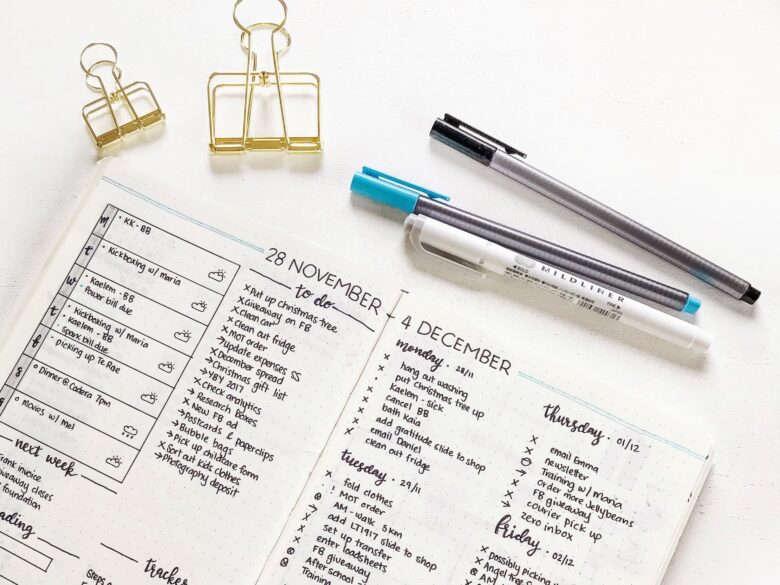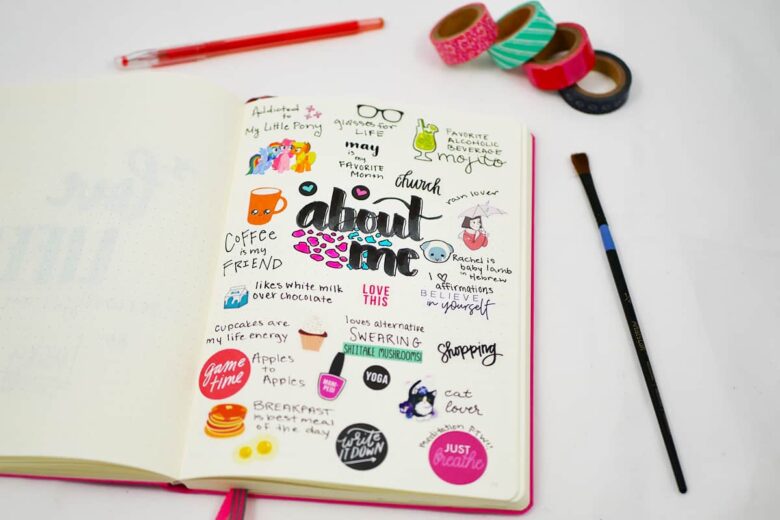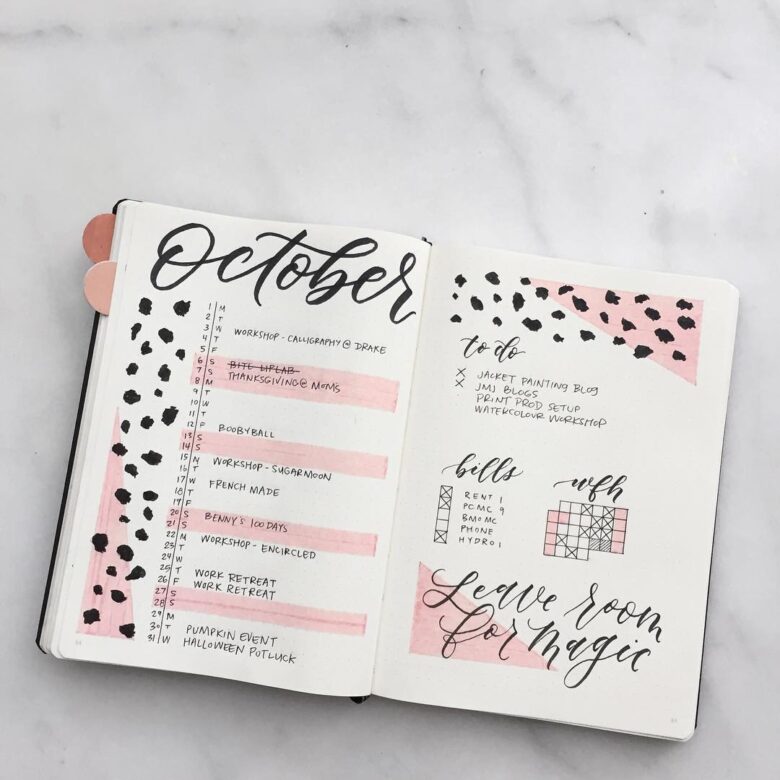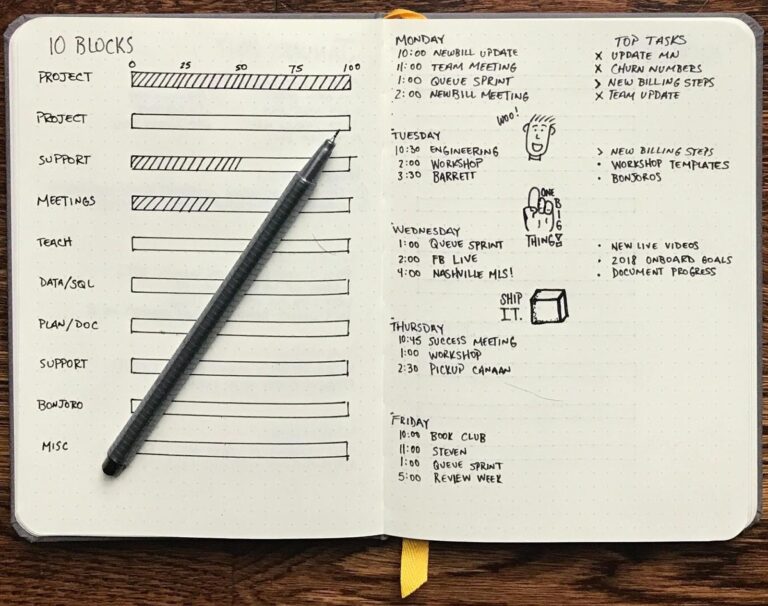A notebook is considered one of the most effective tools to organize your schedule. It can be used to capture your thoughts, words, ideas, and intended activities. Writing-loving folks from here share for you some hints on starting and keeping a bullet journal.
While the notebook gets you organized, people are left to deal with multiple notebooks. And the individual has one notebook for work, home, budgeting, personal thoughts, business ideas, and such other different activities. Bullet journaling steps in to help you bring all these notebooks together and enhance your organization.
Bullet journaling was introduced to the public in 2013. When Ryder Carroll introduced the method, he did not know that it would lead to a productivity craze. It has gone on to inspire a lot of people to organize their lives and become more productive.
How Bullet Journaling Works

Starting the bullet journaling journey can be overwhelming for some people. Though the method has been adopted by tech giants like Facebook and Instagram, the idea of organizing your notebook is still not the easiest to achieve. However, the developer of the method has a reminder to people who feel that the method is difficult to use. Carroll insists that the use of this method has nothing to do with what you see online. It is how the method works for your unique situation and how life feels when you have implemented this method.
Some of the people who would like to use the method worry about their terrible handwriting. The developer insists that there is no point in learning calligraphy. Some people will have numerous strike marks on their notebooks. It is an indication that you are planning for something, achieving it, and thinking about the future.
Detailed planning is difficult for people busy-enthusiasts who love to live a freelance-productive life. It compliments all the online tools you may use in your attempt to bring some order into your life. All you require is a pen and a notebook. You will spare 15 minutes in the morning to create some order into your life. Bullet journaling helps you to avoid excessive self-consciousness and create a sustainable habit.
Steps Involved In Bullet Journaling
Bullet journaling is regarded as a habit rather than the actual act of noting down your activities. Once you have gotten used to the habit, it becomes easier with time such that you become an ambassador to recruit other people.
1. Change Your Mindset

The first notebook helps you to learn how bullet journaling works. This is a productivity tool that helps you to develop a habit. It is difficult at the beginning but will get easier with time. Do not target, to begin with, the most sophisticated notebook. In fact, it will be a mess, to begin with, eventually enabling you to learn how to polish your entries in the notebook. Prepare your mind for new routines that will transform your life.
2. Get A Journal And Necessary Writing Tools
Pick an ordinary notebook that will not antagonize you once you have made enough mistakes. The journal may come with lines or a plain paper, based on your preference. Avoid journals with pre-existing sections because it will be difficult to customize. A pencil will suffice because you can erase whatever you write. You can still use the ball-point pen but still prepare to live with the ensuing mistakes. It is allowed at the beginning before you get used to the bullet journaling.
Create An Index Page
The success of the BuJo system is anchored on the effective use of the index system. The index page works like the table of content for your notebook. It becomes your reference section whenever you are looking for pages in your notebook. The index page should capture all sections that will rule your life on a daily basis. Though you will not be making entries on all pages each day, the segments must be captured on the indexing page. This helps you to organize your work better.
Create Guiding Logs

The BuJo system uses the logs as staples. It is a brain-dumping ground for projects and ideas you are working on at the moment. The logs also help you to store ideas you intend to explore in the future. The logs should be created in three categories.
Logs for the future – the ‘future’ log ensures that ideas you are not working on at the moment remain at the fore of your mind. It can be regarded as ‘someday or maybe’ list.
Monthly log– the log captures ideas and projects that you will be working on in the next thirty days. It means that these projects are already in progress. By keeping it at the fore of your thoughts, you will not have to wait until the last minute to assess progress.
Daily logs– the section captures the activities you are going to engage in today. This is the section that will come with reminders, meetings, and to-do lists. The activities captured in this section will be drawn from the items you had envisaged to undertake in your monthly log.
Develop Personalized Signifiers
Signifiers are a personalized system that indicates the activities you intend to undertake. It helps you to identify these activities at a glance. Use such signifiers as stars, boxes, circles, and ticks, among others. Signifiers help you to identify the activities easily without even having to read into the details.
Create Collections Of Documented Items
Collections are regarded as running lists that will enable you to remember the activities you are undertaking. The lists will capture, for example,
- The books you wish to read
- Movies you desire to watch
- Friends or family you want to reconnect with
- Topics for your blog
- Ideas for self-care,
- The lists will depend on the activities entered in your journal.
The work of creating a bullet journal appears tough at the beginning. However, it will get easier over time. You must create time to make entries in the morning and assess your progress by the end of the day. The beauty of the journaling method is that it ensures that your life is orderly. You will also achieve the goals you have set for yourself.

